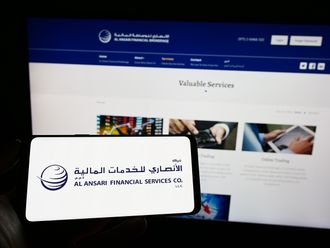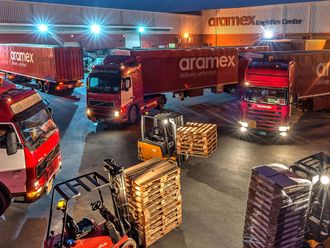
London: The long-standing support from petrodollars for Western financial markets is gradually waning as oil-rich countries favour recycling their windfall revenues closer to home and away from low-yielding developed economies mired in the debt crisis.
Big oil producing countries provided a key source of stability and liquidity for developed markets in the past, and their purchases of Western assets also helped mitigate the impact of higher energy costs on economic growth.
Petrodollar savings flows over the coming year are expected to hit $70 billion a month, surpassing the level reached during the boom of 2005-2007, as the global economy resumes a recovery after the current soft patch.
But low real and expected rates of return in developed markets and debt crises in the Eurozone and the US will dissuade oil producers from making investments in the West.
This is especially likely because any oil producers are prioritising domestic spending, partly because political unrest in the Arab world highlighted the need for redistributing wealth at home.
Silver lining
"It's not so clear-cut now. If you have an oil price rise driven by a supply shock, it's the tap being turned off. It's difficult for the economy to adapt," said Carl Astorri, global head of economics and asset strategy at UK private bank Coutts.
"There's traditionally a silver lining of countries getting these revenues invested back in financial markets. This time around they're being used to pacify their voters. They are being more recycled at home."
Following popular revolts in the Middle East and North Africa, countries like Bahrain, Libya and Kuwait increased domestic spending or handed cash outright to their citizens in packages totalling as much as four percent of gross domestic product. Saudi Arabia alone is spending $130 billion, or a staggering 30 per cent of its GDP.
These countries can more than afford to do so, if Goldman Sachs' estimate for petrodollar savings flows are anything to go by: the bank forecasts imply $840 billion over the coming year, based on Brent oil at $126.50 a barrel by mid-2012.
On a monthly basis, this is second only to the record $90 billion pace reached briefly in July 2008 and compares with $10 billion in March 2009 when Brent oil fell below $50 a barrel.
Even for those less affected by the turmoil, the domestic economy may be more attractive destination given faster growth.
In the case of Qatar, where the economy is expected to grow 20 per cent this year, the government is planning to spend $225 billion in the next five years on new infrastructure projects including road and rail networks.
Right infrastructure
Roughly four per cent of this is related to the 2022 football World Cup building hotels and air conditioned stadiums.
"Previously the amount of investment that went to domestic markets was very miniscule because it was a small country," said Sandeep Nanda, fund manager of Qatar Investment Fund PLC, which is 10 per cent owned by the country's SWF.
"Now it's pretty much an equal focus [between home and abroad]. This is not only to put money to work as investments to diversify a revenue stream, but also to make sure internal economies are solid and have the right infrastructure. That's true of Abu Dhabi, and true of Saudi Arabia."
Petrodollar savings are usually parked initially at central banks, which have traditionally bought liquid sovereign bonds in the US and the Eurozone. The government then allocates part of the capital to sovereign wealth funds to invest more actively and generate profit for future generations.
Central banks, for their part, may be less keen to continue accumulating government debt, especially US Treasuries. The escalating Eurozone debt crisis is also a source of worry.
Norway's $561 billion wealth fund, for example, is planning to reduce exposure to European assets over time. The oil fund also said it had little interest in government debt and was seeking broader emerging market exposure.
The shift in the destination of petrodollars managed by sovereign funds is getting more visible in equity markets, where the emerging world is increasingly attracting direct investment.
Data from advisory group Monitor shows the Asia-Pacific region attracted the largest chunk of SWF direct investments in 2010 at $25.2 billion, or nearly half of the total. Developing economies as a whole accounted for 60 per cent of direct investments, up from 53 per centin 2009.
Thomson Reuters data shows SWFs have become more active in merger and acquisition activity this year, with volumes doubling to $25.4 billion in the first half of 2011 from the comparable period last year.
"Direct SWF investments appear to be more prevalent. Returns on many traditional asset classes are currently depressed and seem likely to remain so, particularly developed market equities and government bonds," Monitor said in a report last month.
- $130b: value of domestic spending by Saudi Arabia
- $225b: money to be spent by Qatar in five years
- $25.2b: sovereign funds lured by Asia-Pacific












